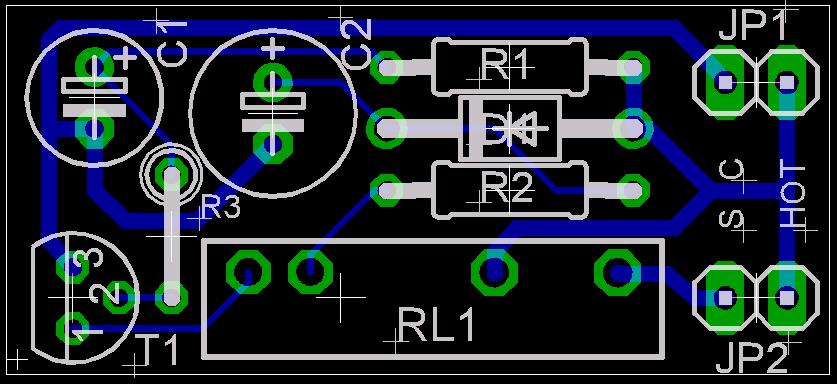Read some other posts
But my horn still doesn't sound right . garbled.
Using battery fine. Off of frame.
But on track garbled.
Checked ground.
So. What type of DC pc relay would work here .. To bypass the Lionel relay.
|




|
Read some other posts
But my horn still doesn't sound right . garbled.
Using battery fine. Off of frame.
But on track garbled.
Checked ground.
So. What type of DC pc relay would work here .. To bypass the Lionel relay.
Replies sorted oldest to newest
You should keep the topic in one thread so all info is one place, folks don't have to ask about things again and again.
The horn needs dc from a bat., a whistle relay only closes points between batt, and horn, like a switch.
So is the relay chattering on/off/on or is the horn not getting good battery power thru the points? Clean and sand/file between the points where the touch when closed.... lightly, straight, flat, level... they should be flat&smooth and touch level when closed. Little tits can build up on points over time as jumping electrons(etc) drag a few metal molecules across the air gap(s).
There are many posts but not in changing out relay.
And. What about hijacking. A post?. If I can't. Find what I'm looking for. I'll make my own.
Now. The horn.
Stan or John should know if a PC dc relay will work.
If 5 volts dc goes thru the rails in theory it should work.
A friend with a Lionel tester ..has been under the weather. Or I would the relay tested.
I will recheck the points.
In one of the posts some solder a jumper wire.
The Lionel whistle relay is a slug relay. A very special relay that operates on DC, but not AC. I doubt you will find an equivalent relay. Usually the problem with horns is there are just too many contact points in the battery circuit, which is only 1.5 volts. As Adriatic said above, clean the contacts on the relay. Another problem is the relay armature hinge point. Many people add a super flex wire shunt around this hinge. Find as many of the other contact points as you can and dissemble them, clean them, and reassemble using a little silver grease. For those contact points you can not get apart, try spraying a little Deoxit D5 on the joint.
It isn't hard to swap a relay. Hijacking is when you post off topic" taking over" or draw badly away from the OPs ability to solve their issue. Reviving old topics for continuing it isn't a highjack if on topic.
Starting a new topic is no sin sure.... fyi, I thought from the wording you had already posted about this. Not enough info here to make it easy on anyone trying to help.
.....Or I might know, or others too. and no a pc's dc relay won't be able.to tell ac from dc. Nor any trick to. The closest thing was old telephone relays(where lionel got the shunt relay originally) Knowing how to address most issues and recalling exactly what's there aren't the same thing all the time ![]()
Solder the relay post.... loosing a connection at an old rivet can sometimes be fixed by solder, yes. This applies quite often actually, so backtrack along the battery traces/rivets/connections too.
Voltage crosses bad connects easily until the amp draw rises, then the volts may drop fast where there is some resistance to amps. Testing volts while the horn sounds (loaded); test at the horn terminals too.
You aren't looping any wires near the relay coil are you?
edit: auto.composer added an extra "voltage" after amps...now removed
@David Johnston is correct in that the Lionel Relay is extremely specialized and not something you will find an off the shelf electrical replacement (not evening going to think about physical form factor here) for from Mouser, DigiKey, China, etc....
However, there are circuits you can build yourself to replace the relay:

www.3rdrail.com/err-3rdrail/Hobby/PWR-Ctlr/PWR.html
Note: Some of the parts mentioned in the breakdown are NLA and will need to be substituted.
When the horn is mounted on the frame, the 'garbled' sound is from the E unit vibrations from the DC current. Try operating the horn with the E unit off.
Thanks. B4. David. Chuck. Adriatic..
Will try that with e unit off.
But I like the circuit board. Thanks b4. Now to get that into osh. Have them make some boards.
Who still uses a battery for horn out there in the ogr universe.?
Seems it was the relay.
The "Purest" vintage collector/operator would still use a battery. There are many folks that are worried enough about the "collectors value" to not want any custom changes.
I know a local that buys/sells/trades too often to bother with any updates. He keeps about 10-20 trains at a time max. He only keeps three long term.(a Hudson, Vir. FM-TM, and a prewar tin steamer(#?)
The traces from R2 (right) goes where? D1?
JP2 to RL1 is a dead end trace here?
....I guess you can find pin out list on the site?
Access to this requires an OGR Forum Supporting Membership
